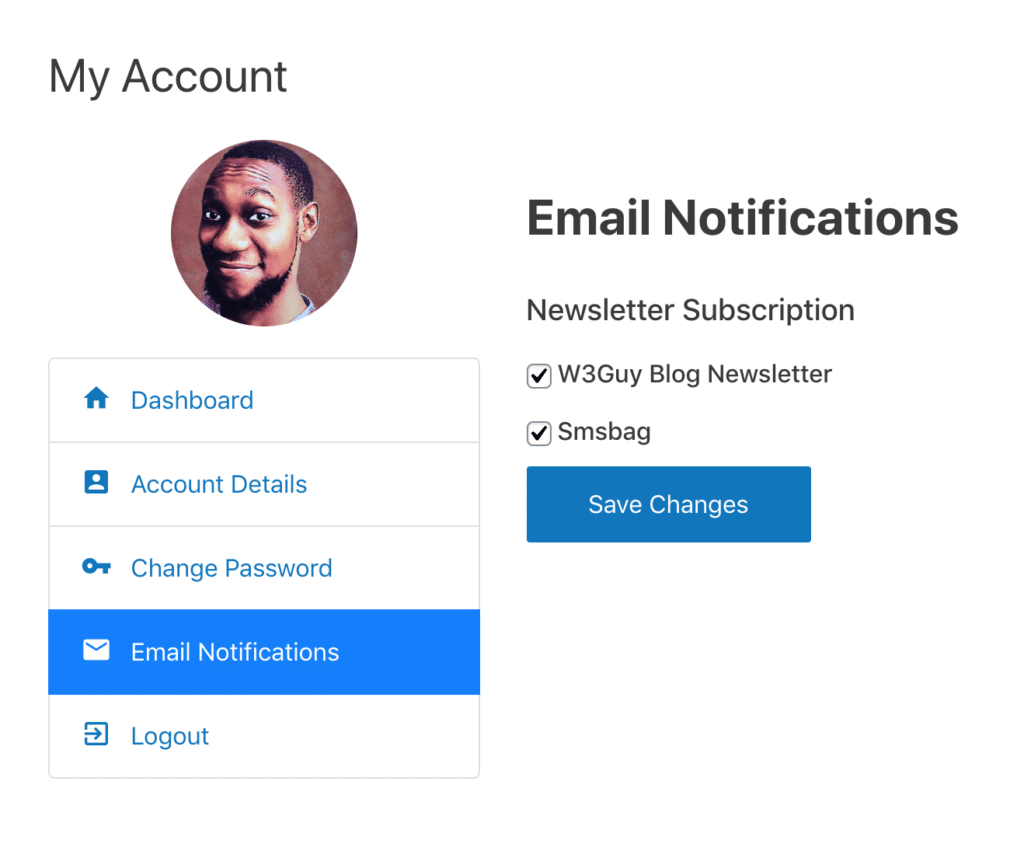How to Let Users Select Mailchimp List to Subscribe in WordPress
Want to let visitors and users select the Mailchimp email list or audience to join when registering to your WordPress site?
Allowing visitors to opt into your email list is a great way to build a subscription list that you can use to grow your business further.
In this article, we will show you how to create a Mailchimp email list and then how to connect that email list with your site’s WordPress registration form. After that, anyone registering to your site can select the Mailchimp audience or list to subscribe to.
Let’s begin with the tutorial.
Letting Users Select Mailchimp List to Join on Your WordPress Form
To let WordPress users decide which audience or list in Mailchimp to, you will need to take the following steps:
- Create a Mailchimp account
- Install a plugin to connect your website with the Mailchimp account
- Create an email subscription list in the Mailchimp account
- Connect the email subscription list with your website
- Create a custom registration form & allow people to opt for an email subscription list
Let’s start with the first step, i.e. creating a Mailchimp account.
1. Create Mailchimp Account
Sign up with Mailchimp and activate the new account. The steps are very straightforward. First, go to the registration page and sign up. Upon registering, you will get an email from Mailchimp asking you to activate the account. Open it and click on the Activate Account button.
And that’s it. You now have a Mailchimp account.
The next step is to install a plugin that’ll help connect your WordPress website with the new Mailchimp account.
2. Install ProfilePress & Connect Plugin With Mailchimp
We will use ProfilePress to connect your Mailchimp account with your WordPress website. Besides connecting with your site, the plugin will also help you create custom WordPress forms, which is an essential step in this article.
ProfilePress is a premium plugin; to use it, you need to buy a license.
Purchase the plugin, install it, and then add the license to activate the plugin.
After installation, go to ProfilePress > Settings > Integrations. You should be able to see an option for adding an API key.
You will need to generate an API key from your Mailchimp account. This guide will help you do just that.
Once you have the API key, go back to the Integration page and add the key to connect the Mailchimp account with your WordPress website.
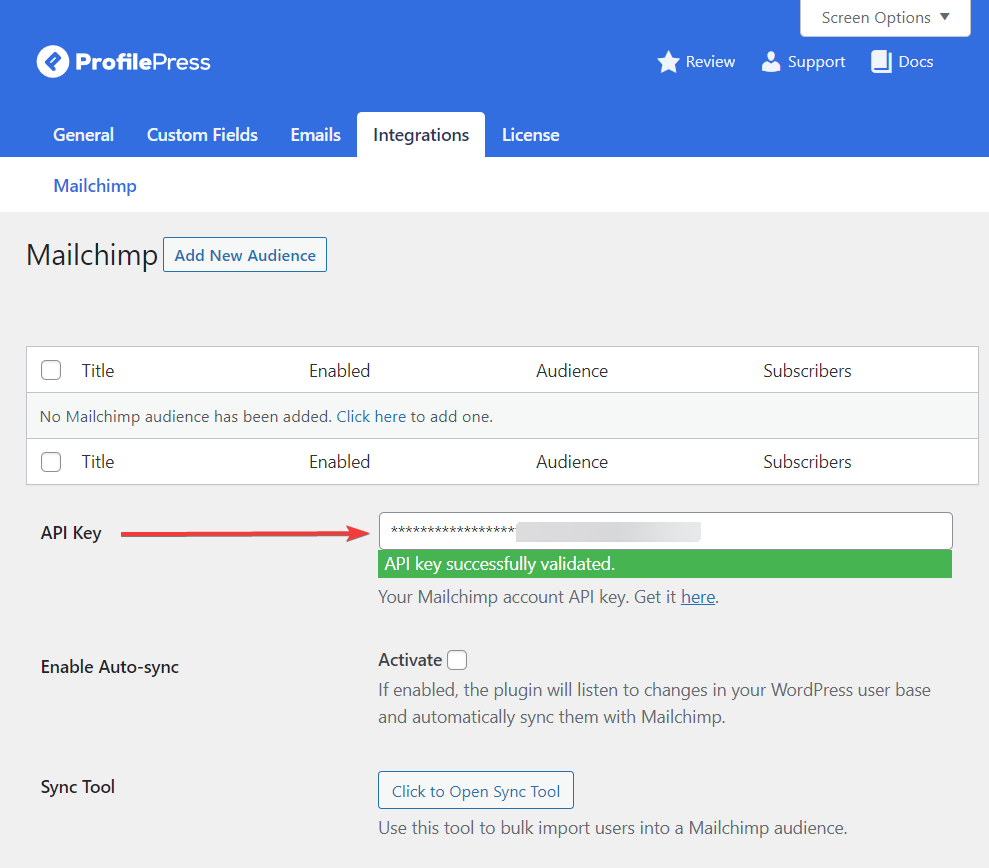
3. Create a Mailchimp Email Subscription List
The first step is to create an email subscription list in your Mailchimp account. Then, use this dedicated help doc created by the Mailchimp developers.
4. Connect the New Mailchimp Email Subscription List to Your Site
ProfilePress will help you connect the new Mailchimp email list to your WordPress website. Here’s how:
Go to the ProfilePress Integration page on your WordPress dashboard and select the Add New Audience option.
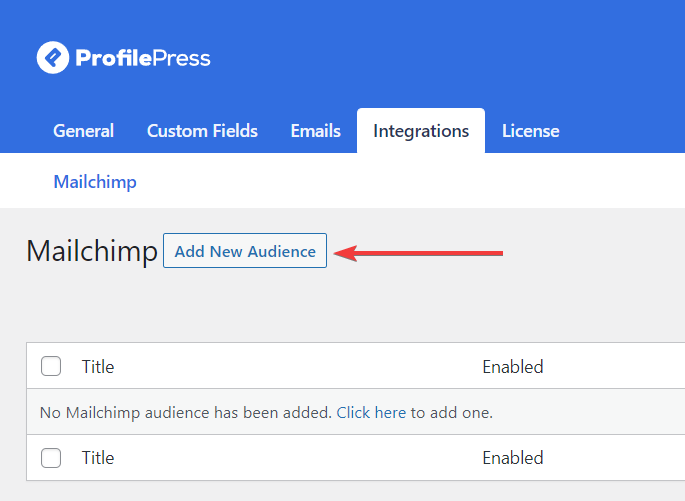
On the next page, select Enable Audience. Then add a Title. This is the text that will appear before the visitors who are trying to register to your website. For example, you might want to add something like “Marketing Emails” to the title.
Next, from the dropdown in the Audience option, select the new Mailchimp email subscription list.
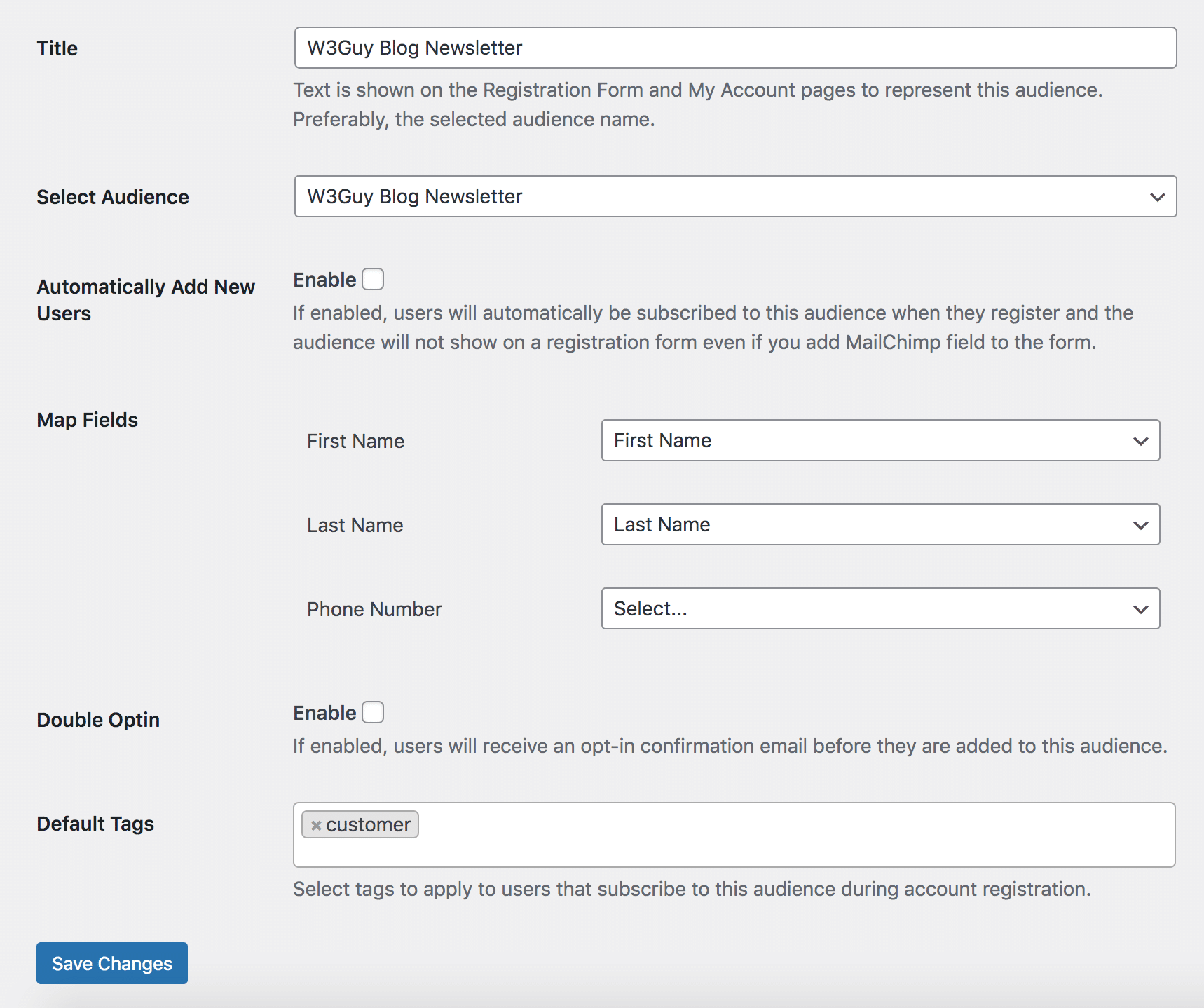
The Map Fields option allows you to map the fields to their respective attributes in Mailchimp.
After mapping the fields, hit the Save button. You now have a Mailchimp email subscription list. All left to do now is add the email subscription option to the registration form.
5. Create a Custom Registration Form & Allow People to Opt For Email Subscription
There is no way to add an email subscription option to the default WordPress registration form. Instead, you need to create a custom user registration form to be able to add the email subscription option to your site’s registration form.
Luckily, you don’t need to install a different plugin. Instead, ProfilePress will help you create a custom form.
Go to ProfilePress > Forms & Profiles > Add New > Registration. Enter a name for the form and choose a prebuilt template for your registration form.
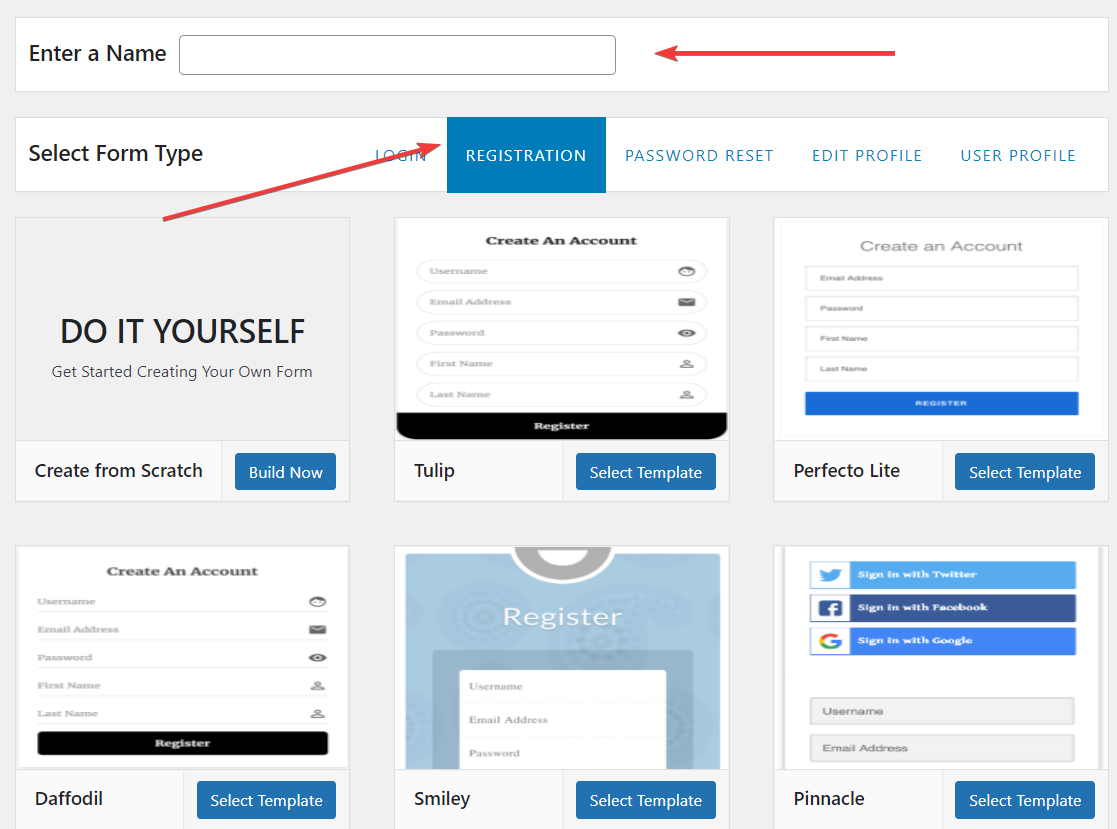
The next page will reveal a drag-and-drop builder that you can use to add or remove fields from the registration form.
The fields that appear on the right side of the builder are the ones that will appear on the form. You can keep the ones you need and delete the ones you don’t.
On the right side of the builder, there are fields that you can add to the form. We will use one of the fields to add an email subscription option to the registration field. Next, drag and drop the Custom HTML field to the left side of the form builder.
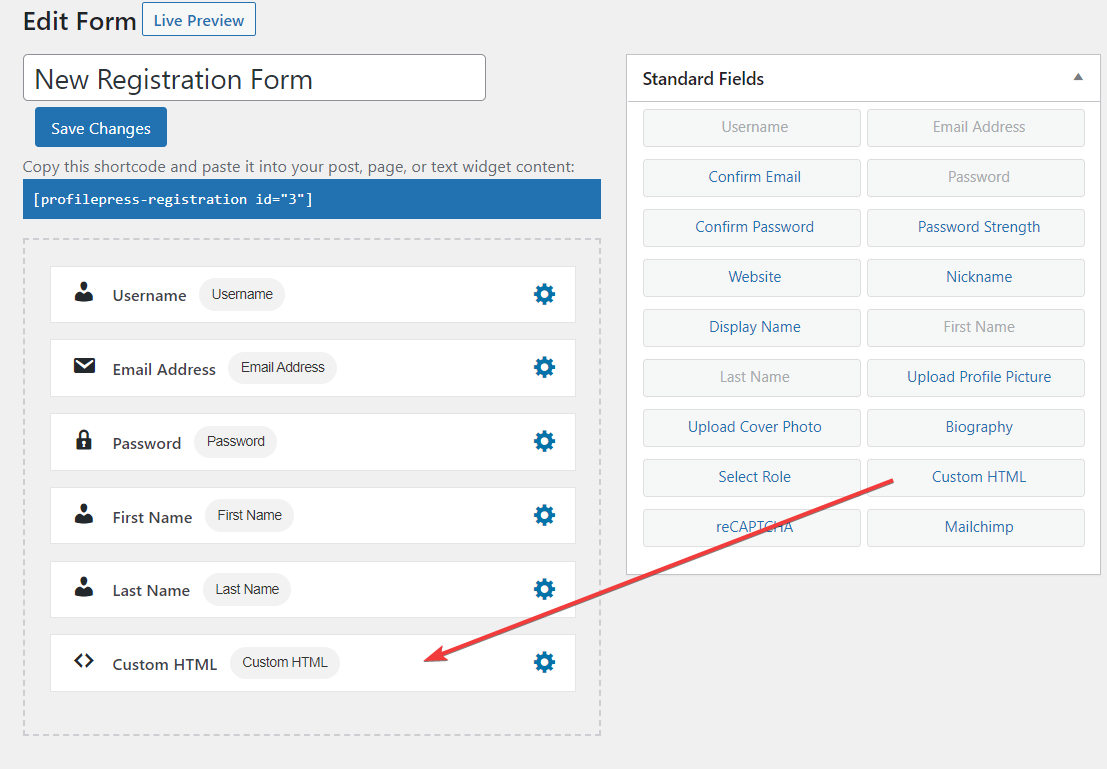
Next, click on the gear icon, and a popup will appear. In the content field of the popup, write a call-to-action like “Subscribe to our newsletter” or “Join our mailing list.”

Next, drag and drop the Mailchimp field underneath the Custom HTML. Next, click on the gear icon for the popup to appear, and you should see a Select Audience option with a dropdown menu. You can add as many audiences or email lists to the form as you want.
Select your Mailchimp email subscription list from the dropdown menu and save.
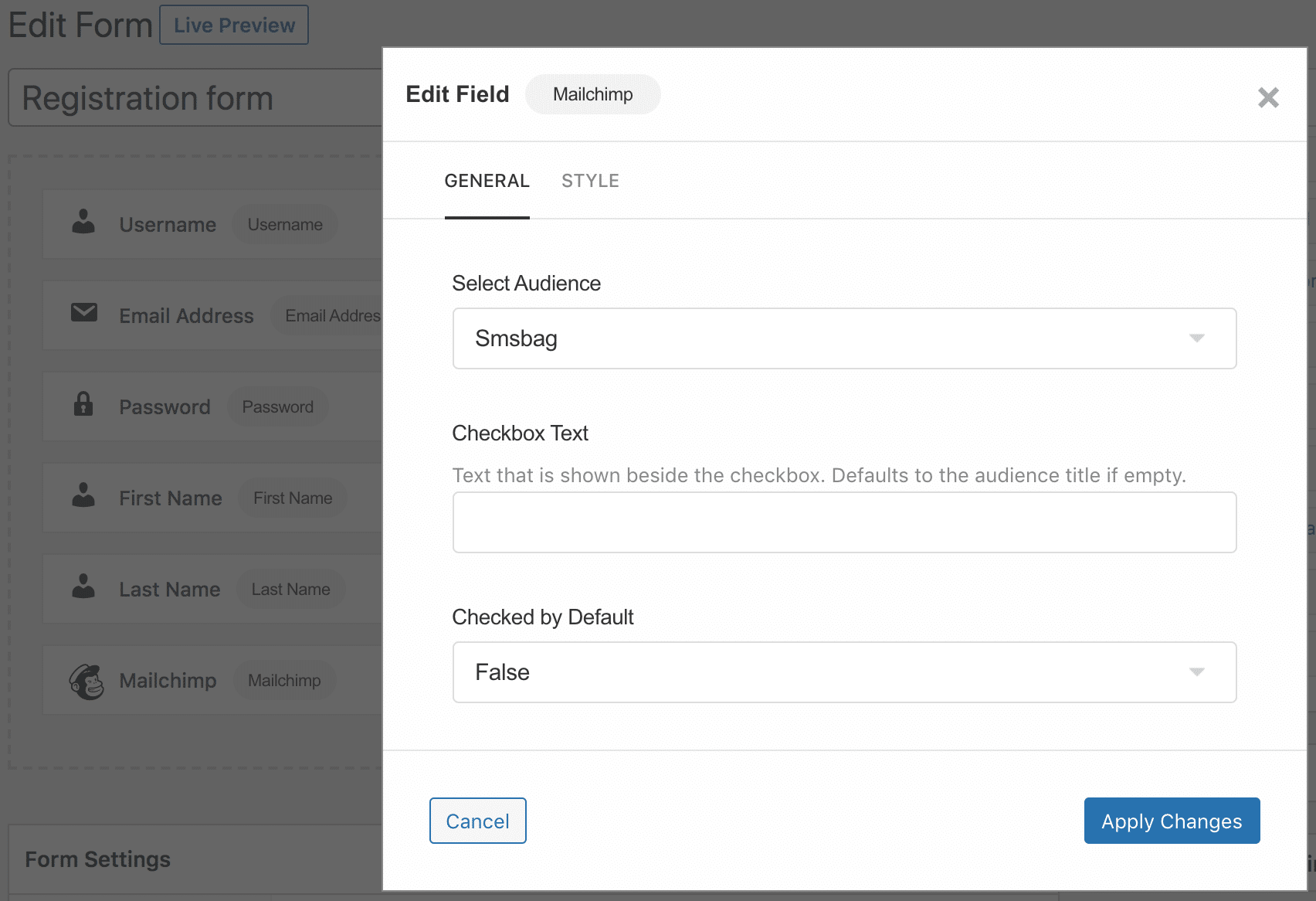
You now have a custom registration form allowing visitors to opt for an email subscription. The next and final step is to publish the registration form.
Using Campaign Monitor Instead of Mailchimp
ProfilePress is also compatible with Campaign Monitor. You can use Campaign Monitor instead of Mailchimp and allow your site visitors to opt for an email subscription list. The process is similar except for some noticeable differences. For instance, instead of adding an API key for Mailchimp, you will need to add one from Campaign Monitor. Also, while creating the custom registration form, you must select the Campaign Monitor field, etc.
If you need further assistance, take a look at these help docs.
6. Publish Custom Registration Form
To publish the form on your WordPress website, copy the shortcode on top of the drag-and-drop builder. It should appear right below the name of the form.
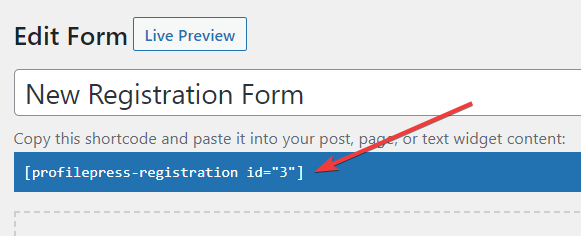
Next, create a new page by going to Pages > Add New and paste the shortcode on the page. Finally, name the page and hit the Publish button.
And that’s it. The form is now live on your WordPress website.
This is how the registration form looks on our demo site. As you can see, visitors to our site can select a Mailchimp list or audience to subscribe to when registering in WordPress.

Using Generic Opt-in Forms Instead of a Registration Form
You will need a different plugin if you want to use a generic opt-in form instead of a registration form. We recommend using the MailOptin plugin.
Like ProfilePress, MailOptin is super easy to use. It’s a dedicated lead generation plugin to help you convert website visitors into subscribers and customers.
Here’s an opt-in form created using MailOptin that includes a selection of email lists your users can decide to subscribe to.
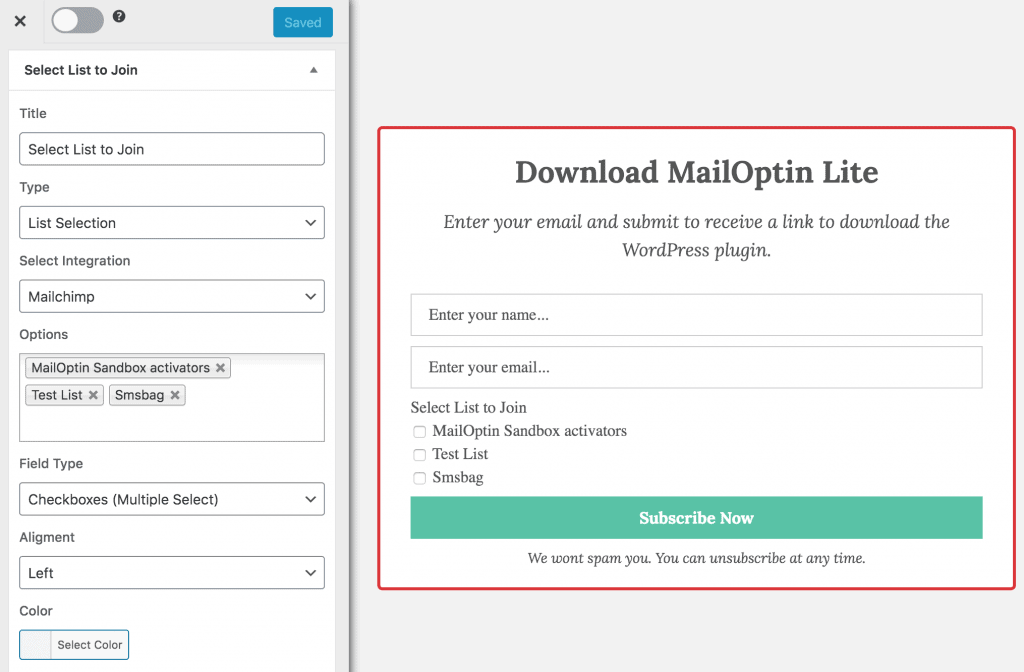
To build a similar opt-in form, you will need to follow the instructions in this article.
Conclusion
Allowing users to subscribe to your email list is an excellent way to build a subscription list that you can use to grow your business. In this tutorial, we have shown you how to create a Mailchimp email list and connect it with your WordPress registration form.
By following these steps, anyone registering to your site can select the Mailchimp audience or list to subscribe to. With the help of ProfilePress, you can create a custom registration form that includes an email subscription option.
We hope this tutorial has been helpful in setting up your Mailchimp email list in WordPress that users can select to join during registration.
